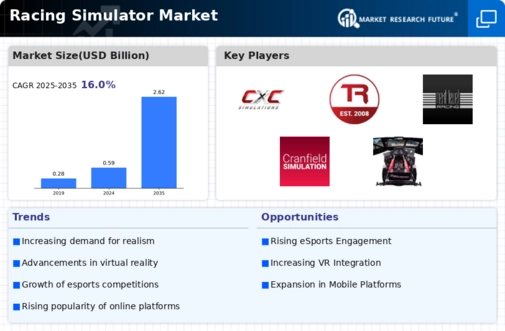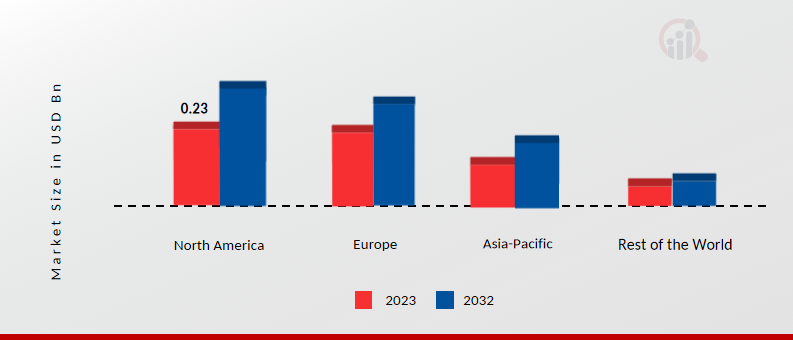Technological Advancements
The Global Racing Simulator Market Industry is experiencing rapid growth due to technological advancements in simulation software and hardware. Innovations such as virtual reality and augmented reality are enhancing user experiences, allowing for more immersive gameplay. For instance, the integration of high-definition graphics and realistic physics engines has made racing simulations more appealing to both casual gamers and professional racers. As a result, the market is projected to reach 0.59 USD Billion in 2024, with expectations of significant growth as these technologies continue to evolve and become more accessible to consumers.
Increasing Popularity of Esports
The rise of esports has notably influenced the Global Racing Simulator Market Industry, as competitive racing games gain traction among audiences worldwide. Major esports events featuring racing simulations attract millions of viewers, creating a lucrative environment for both developers and sponsors. This trend is likely to contribute to the market's expansion, with projections indicating a growth to 2.62 USD Billion by 2035. The increasing participation in esports leagues and tournaments is expected to drive demand for high-quality racing simulators, further solidifying their place in the gaming landscape.
Expansion of Online Gaming Platforms
The proliferation of online gaming platforms is significantly impacting the Global Racing Simulator Market Industry. With the rise of multiplayer capabilities, players can now compete against others globally, enhancing the social aspect of racing simulations. This trend is fostering a community of enthusiasts who share experiences and strategies, thereby increasing engagement and retention rates. The accessibility of online platforms is likely to attract new users, contributing to the market's growth trajectory. As more players join the online racing community, the demand for sophisticated simulators is expected to rise.
Growing Demand for Realistic Experiences
Consumer preferences are shifting towards more realistic gaming experiences, which is a key driver for the Global Racing Simulator Market Industry. Players are increasingly seeking simulators that replicate real-world racing conditions, including accurate vehicle dynamics and environmental factors. This demand is prompting manufacturers to invest in advanced technologies and features that enhance realism. As a result, the market is anticipated to grow at a CAGR of 14.52% from 2025 to 2035, reflecting the industry's commitment to meeting consumer expectations for authenticity in racing simulations.
Increased Investment in Gaming Infrastructure
Investment in gaming infrastructure is a crucial driver for the Global Racing Simulator Market Industry. Governments and private entities are recognizing the economic potential of the gaming sector, leading to increased funding for gaming facilities and events. This investment not only enhances the quality of racing simulators but also promotes their adoption among a broader audience. As infrastructure improves, the market is likely to see accelerated growth, with projections indicating a rise to 2.62 USD Billion by 2035. Enhanced facilities and events will create more opportunities for players to engage with racing simulations.

















Leave a Comment